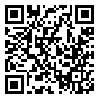2- Ph.D. Professor, Social Determinants of Health Research Center, Department of Health Education and Promotion, School of Public Health, Kurdistan University of Medical Sciences, Sanandaj, Iran ,
3- Ph.D. Assistant Professor, Social Determinants of Health Research Center, Department of Epidemiology and Biostatistics, Medical School, Kurdistan University of Medical Sciences, Sanandaj, Iran
Background and Aim: The incidence of breast cancer in women is expected to rise sharply over the coming decades in Iran. The aim of this study was to determine risk factors for breast cancer in under-50-year-old women during the period 2013-2015 in Kermanshah, Iran.
Materials and Methods: This case-control study was carried out in Imam Reza Hospital and private clinics of oncologists (three clinics) in Kermanshah, Iran. The participants were 202 patients with breast cancer and 398 without breast cancer. Subjects of the experiment group were selected from among patients in the Departments of Oncology, Radiation Therapy, and Chemotherapy of the hospital, while the control group subjects were selected from among outpatients referred to specialty and subspecialty departments and private clinics of the hospital (outpatient, oncology, gynecology, ophthalmology, sonography, ENT, infertility). The two groups were matched for age. Data were collected by interviewing the subjects, the Gill standard questionnaire and the patients’ files and analyzed using the STATA software (version 12) ─ Odds Ratio (OR), 95% Confidence Interval (CI) and the Conditional logistic regression model.
Result: The following variables were found to be the most important risk factors for breast cancer among under-50-Year-old women: a family history of breast cancer in second degree relatives, an age of 18-35 years at the first childbirth, and a history of a benign breast lump.
Conclusion: It is recommended to conduct further studies on the subject with due consideration of other risk factors for breast cancer, as well as education of women about breast self-examination and importance of periodic clinical examinations.
Received: 2017/06/13 | Accepted: 2017/06/13 | Published: 2017/06/13
| Rights and permissions | |
 |
This work is licensed under a Creative Commons Attribution-NonCommercial 4.0 International License. |


